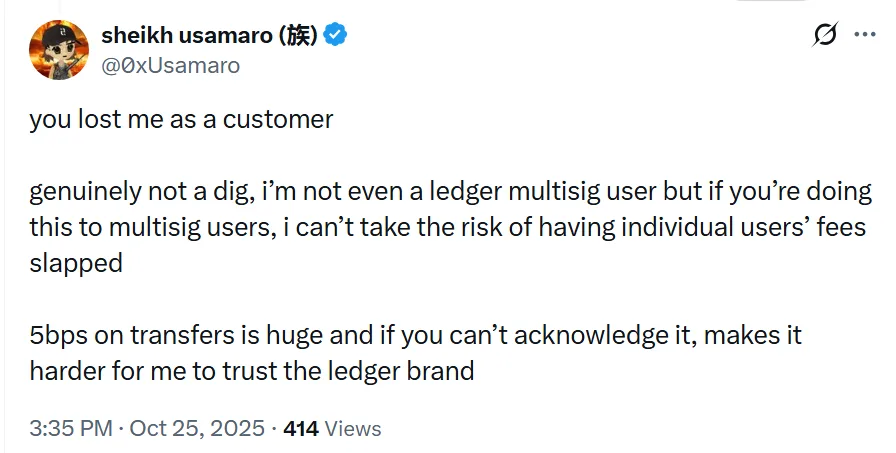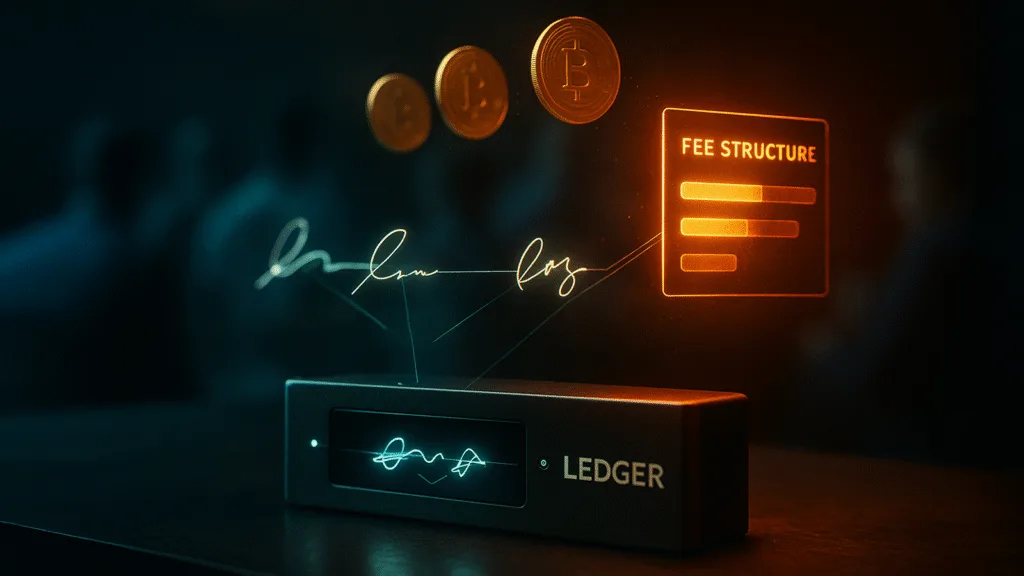- Ledger’s new multisignature feature has introduced a $10 flat fee per transaction and a 0.05% fee on token transfers, in addition to standard blockchain gas fees.
- Developers and users criticize the fee model, arguing it contradicts the principles of decentralization and self-custody.
- Ledger defends the fees as necessary to support the infrastructure and security of the multisig service.
Ledger, a leading provider of cryptocurrency hardware wallets, has introduced a new multisignature feature designed to enhance security for users managing digital assets. However, the update has sparked controversy due to its fee structure.
The new multisig feature, launched on October 24, 2025, includes a $10 flat fee per transaction and a 0.05% fee on token transfers, in addition to standard blockchain gas fees. This pricing model has been met with criticism from various members of the crypto community.
Newsletter
Get weekly updates on the newest crypto stories, case studies and tips right in your mailbox.
Growing community backlash
Ethereum developer pcaversaccio expressed concerns on social media, stating that Ledger’s approach risks turning multisig users into a revenue stream, labeling it a “cash cow” tactic that contradicts the company’s cypherpunk roots. Similarly, Sarnavo, a developer within the Avalanche ecosystem, criticized the move, highlighting that trust features are now becoming paid access, which raises questions about the company’s commitment to decentralization.
CEO clarifies on paid service feature
In response to the backlash, Ledger’s CEO Charles Guillemet clarified that the multisig feature is a paid service, correcting an earlier statement that suggested it was free. He explained that the fees are necessary to support the infrastructure and security measures required for the multisig service.
Despite the criticism, Ledger remains a dominant player in the hardware wallet market, having sold over 7.5 million devices and securing approximately 20% of the global cryptocurrency market value. The company emphasizes that its devices have never been breached in the field, underscoring its commitment to user security.
Also Read: A guide to crypto wallets: The best way to hodl your Bitcoin

The new multisig feature aimed to enhance users’ security, but given the fee structure, many have raised concerns about the balance between innovation and the core principles of decentralization and self-custody in the cryptocurrency space.













